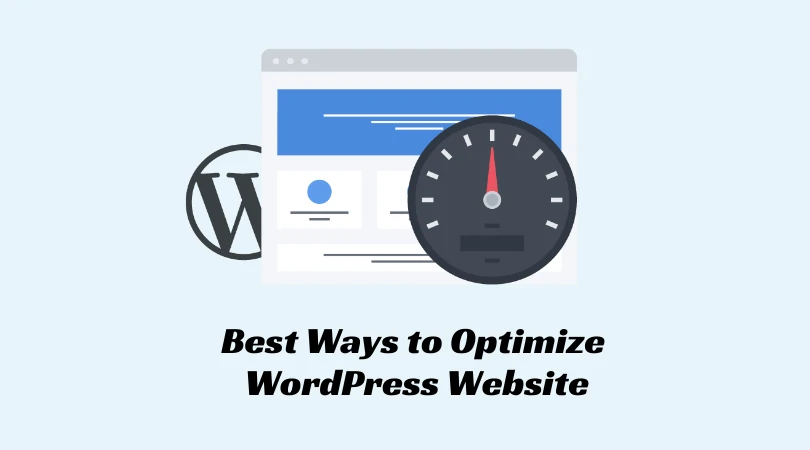Simple Tips to Optimize WordPress Website – WordPress is considered to be a great platform for budding entrepreneurs to create websites for their startups or business. Content management service (CMS) is used by millions of business owners all around the world. More than 400 million websites worldwide are powered by WordPress. It is stated that WordPress sites around the world publish posts every 17 seconds. So, we can see that WordPress is very useful and as a content management service.
Optimize WordPress Website can be a complex and time-consuming process that involves improving the overall performance in a few optimization cycles. Here are 5 best ways to optimize your WordPress site.
While some of the techniques to be used are supported by WordPress plugins which can be freely downloaded and configured, others needed more technical know-how. So, in order to optimize the WordPress website, you should follow several steps:
Database
- Use a database optimization plugin like “WP-DBManager”.
- Add memory to MySql while editing /etc/my.cnf.
- Tune your MySql Database parameters in /etc/my.cnf. Start with mysqltuner.pl and continue to tune every so often over a period of time.
PHP
- Install Zend stack for the opcode acceleration
- Install a PHP accelerator for opcode acceleration/caching. “Zend Optimizer++” and “Alternative Page Cache are the best options.
JS / CSS
Add code to remove your own added CSS/JS from header. When adding 3rd party code snippets it usually comes with Js / CSS files. Instead of loading these files in each of your WordPress site pages, activate them only on the pages there are to work saving by these unneeded server requests and load time. Some plug-ins load unnecessary CSS/JS files for specific scenarios not always used by your WordPress site. To remove this CSS you can manually change the plug-in code and prevent CSS/JS loading or adding code in functions.php to externally avoid the plug-in from uploading.
CDN
You can use CDN or Content Delivery Network, such as Amazon Cloud Front and use “W3 Total Cache” for CDN handling the images, JS and CSS files. This reduces the load latency of these items when they have not been cached by the browser yet. Then, you should install a “Plugin Organizer” plug-in and define which plug-ins should appear on the Admin side and which on the user side. More important is to remove unneeded plug-ins, especially from high loading pages.
Post Revisions
Turn off “unlimited” post revisions. This can be done easily by installing the “Revision Control” plug-in. For sites where Page Caching for logged in users is not possible, for example with WL Members sites, you can use the W3 Total Cache plug-in to just load a cached version of the homepage. This will work perfectly.
WordPress Performance Measurement Tools
There are various performance measurement tools which can be used. You can use such tools as:
- Google Page Speed Tool : https://developers.google.com/speed/pagespeed/insights/
- GTmetrix : http://gtmetrix.com – This tool’s analyzed report also offers additional suggestions for improving the overall performance of your WordPress site.
If you are looking for Optimize WordPress Website or Custom WordPress Development Services then Thanksweb is the Best option for You!

